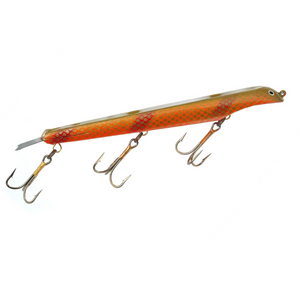Fishing in Lake St. Clair can be an exciting and rewarding experience, especially when it comes to perfecting your casting techniques. The lake’s unique conditions—ranging from water clarity to weed growth—provide excellent opportunities for anglers. When targeting Musky, understanding the key factors that influence fish behaviour will boost your success. Here's a guide to help you navigate the complexities of casting in Lake St. Clair.
Key Factors to Consider
- Water Clarity: The water clarity in Lake St. Clair is vital. Target areas where there is 3-5 feet of clarity with a distinct teal hue during the late summer. The right water color often indicates the presence of baitfish and the growth of weeds, especially cabbage beds that hold fish.
- Baitfish: Keep an eye out for schools of shad and perch, as they attract larger predators like musky. These baitfish are key indicators of where to cast your line.
- Weeds: Cabbage beds are the go-to spots for fish during various times of the year, particularly in the summer and early fall. Target areas with the thickest cabbage growth and combine as many factors—like water clarity and baitfish presence—as possible for the best results.
Seasonal Patterns for Casting Success
Early Season: Shallow and Warm Waters
In the early season, focus on the northwest and southeast corners of the lake, as these areas warm up the quickest and have the least current. Fish tend to avoid the colder water flowing in from the St. Clair River and prefer the shallow cabbage beds that start to grow in these warmer zones.
If the cabbage hasn't grown much early in the season, switch your strategy to targeting hard bottom areas on the south shore in 12-15 feet of water or on the west shore of the U.S. side. Fish tend to group up here in early spring.
Summer: Prime Time in Deeper Waters
As the season progresses, casting in 15-19 feet of water along the main lake and south shore cabbage beds becomes a reliable pattern. During mid-to-late summer, fish congregate and feed heavily, making it easier to catch them in groups.
Weeds will start to thin out by mid to late August, and when that happens, transition to hard-bottom areas if the weed beds are too clear. Casting around grass beds will generally yield better results than hard bottom patterns during summer. But if clarity in weed beds becomes too high, switch your focus to hard-bottom areas.
Fall: Time for Transition
In early fall, fish move towards shallower eelgrass beds, which grow just inside the deeper cabbage. As the wind starts to disrupt these grass areas, transition to casting over hard-bottom areas. Fall is peak fishing time, with fish gathering in smaller, concentrated areas. Casting is particularly effective when water temperatures drop to 55-50 degrees Fahrenheit.
Early fall transition is based on shad migration, so keep an eye on migrating shad, as they tend to move towards flowing water in the Thames, Detroit, and Belle Rivers, and musky will follow. Late in the season, the U.S. side of the lake often provides better conditions due to more stable water temperatures — especially around the 8-10 mile area, Clinton River, Metro Beach, and both the North and South channels.
Best Baits and Techniques for Musky Fishing in Lake St. Clair
- Big Rubber Baits: Big rubber baits like the Musky Innovations Magnum Bull Dawg, Chaos Tackle Medussa or Poseidon, Waterwolf Lures Shadzilla or the Toddy Tickle Baits Warhammer are the top choice for casting in Lake St. Clair, especially with the yo-yo ripping technique. Short, sharp rips followed by letting the bait fall on a slackline often lead to strikes on the drop. For this technique, 9-10 foot heavy to extra-heavy rods are recommended to properly move the bait.
- Bucktails: For casting bucktails, use size 9’s and 10’s, which work best when fish are feeding higher in the water column. Opt for a straight retrieve, as bucktails are most effective when fish are active due to factors like bait movement, wind, and lowlight conditions. However, bucktails become less effective once water temperatures dip below 55 degrees. Always consider water clarity when selecting colours—natural colours for clear water and blacks or brighter colours for dirtier water.
Final Thoughts
Casting in Lake St. Clair is all about understanding the seasonal changes, knowing where the fish congregate, and using the right techniques and baits. By focusing on water colour, baitfish presence, and weed growth, you can significantly improve your chances of success. Don’t forget to adapt your approach as the seasons change, and always stay flexible with your bait choices and casting techniques.
With these tips in mind, your next fishing trip to Lake St. Clair is bound to be a successful one!








